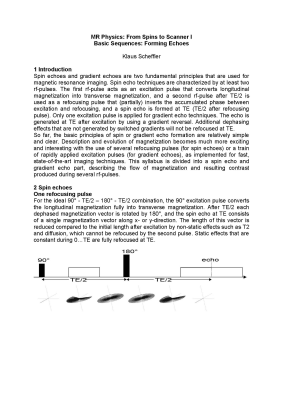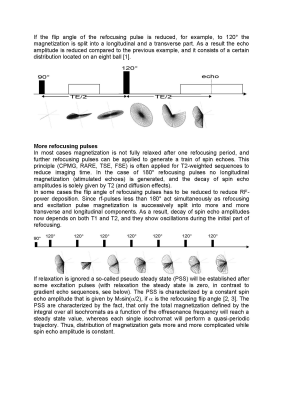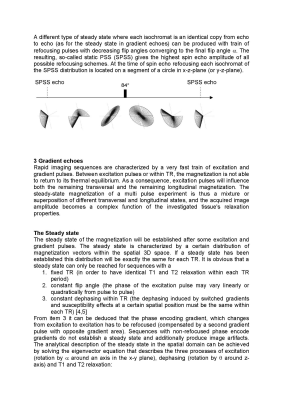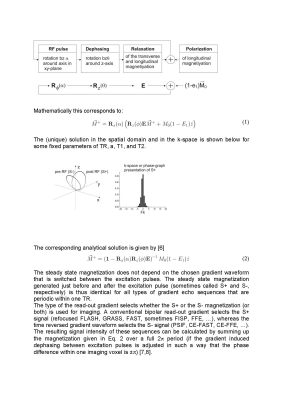Basic Sequences: Forming Echoes
Klaus Scheffler1
1Max Planck Institute for Biological Cybernetics, Tübingen, Germany
1Max Planck Institute for Biological Cybernetics, Tübingen, Germany
Synopsis
In spin echo techniques, the first rf-pulse acts as an excitation pulse that converts longitudinal magnetization into transverse magnetization, and a second rf-pulse after TE/2 is used as a refocusing pulse that (partially) inverts the accumulated phase between excitation and refocusing, and a spin echo is formed at TE. Only one excitation pulse is applied for gradient echo techniques. The echo is generated at TE after excitation by using a gradient reversal.




